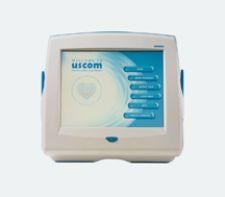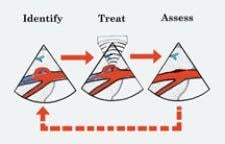
As costs continue to soar for the medical community, health professionals are looking for ways to save money while not ...

Give a highly ranked research and teaching facility access to cutting-edge technology, and the results could be death ...

What factors are driving increased adoption of healthcare information technology, otherwise known as HIT? Clinical IT and technology in general are getting a lot of focus from the government, from the industry, from clinicians — and the drive to make healthcare safer is what's driving overall growth of clinical IT and technology adoption.
Providing exceptional cardiovascular care for patients to achieve the best possible outcomes is the number one goal for ...

One of the highest priorities for physicians who diagnose and treat heart failure conditions is to keep their patients ...

It struck me the other day that while thousands of healthcare information technology (HIT) executives flock to San Diego ...

It’s not uncommon for a cardiologist at University Community Hospital (UCH) in Tampa to walk about two miles to get his ...
Cardiac positron emission tomography (PET) is growing in popularity among cardiologists because it provides the ability ...

Minimally-invasive surgery has proven to be safer, requires a shorter hospital stay and is cosmetically preferred over ...

Coronary bypass surgery, a difficult and painful way to repair major damage caused by coronary artery disease, may be on its way out — and it’s a long time coming for researchers like Douglas Losordo, M.D. After all, he’s spent the past 10 years looking into the possibilities of adult stem cell therapy as a viable alternative to the procedure.

Although implantable cardioverter defibrillators (ICDs) have been around for nearly 20 years, they gained notoriety in 2001 when Vice President Dick Cheney became a high-profile patient who underwent the implantation procedure.
When performing radiofrequency (RF) ablation to treat cardiac arrhythmia, medical professionals must balance the safety ...
Although healthcare budgets are tight, needs are expanding. Clinical facilities are continuously looking for ways to ...

A trend is emerging in cardiovascular image and information systems designed for the cath lab and was apparent on the ...

The drug-eluting stent (DES) market is a multibillion dollar business in the U.S. — and it's estimated that over three ...
Change Healthcare Cardiology Hemodynamics is an integrated hemodynamic monitoring system for monitoring vital signs and ...

Intensive care units are highly dependent on the efficient transfer of physiological data to multiple healthcare providers. In the delivery of healthcare in 2006 there exists a strong rationale for a tight relationship between critical care and information technology (Celi, Hassan, Marquardt, Breslow, & Rosenfeld, 2001).

Technological advancements over the years have forced most OR methods used in 1964 into dusty, old history books and ...
Blood pressure measurement is a given for patients in the hospital, but for surgical or critically ill patients — in ...

 May 22, 2006
May 22, 2006




